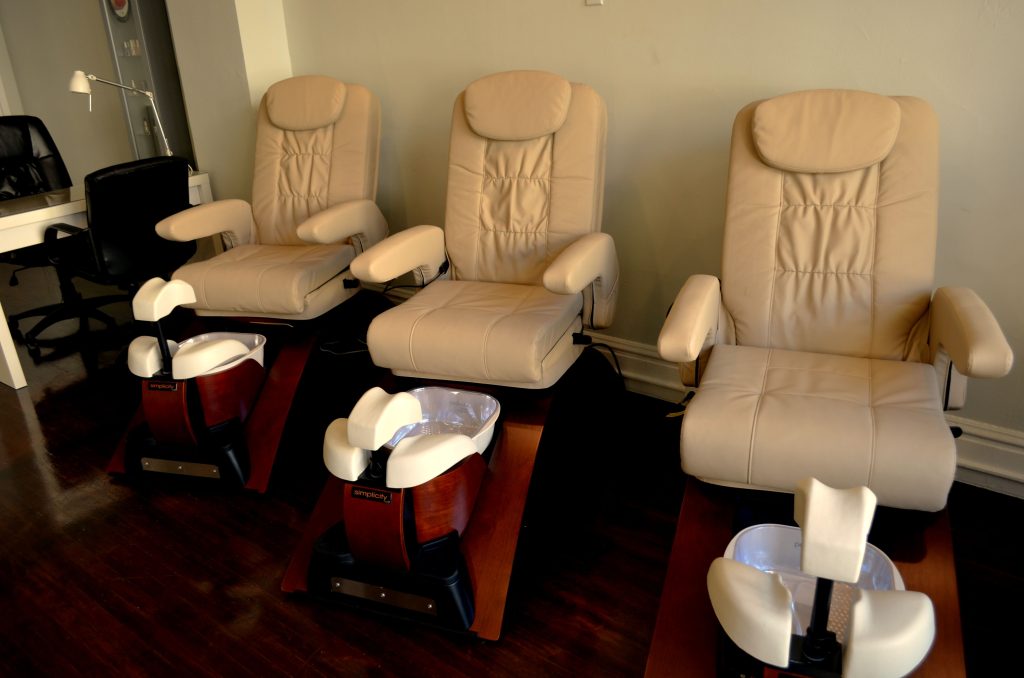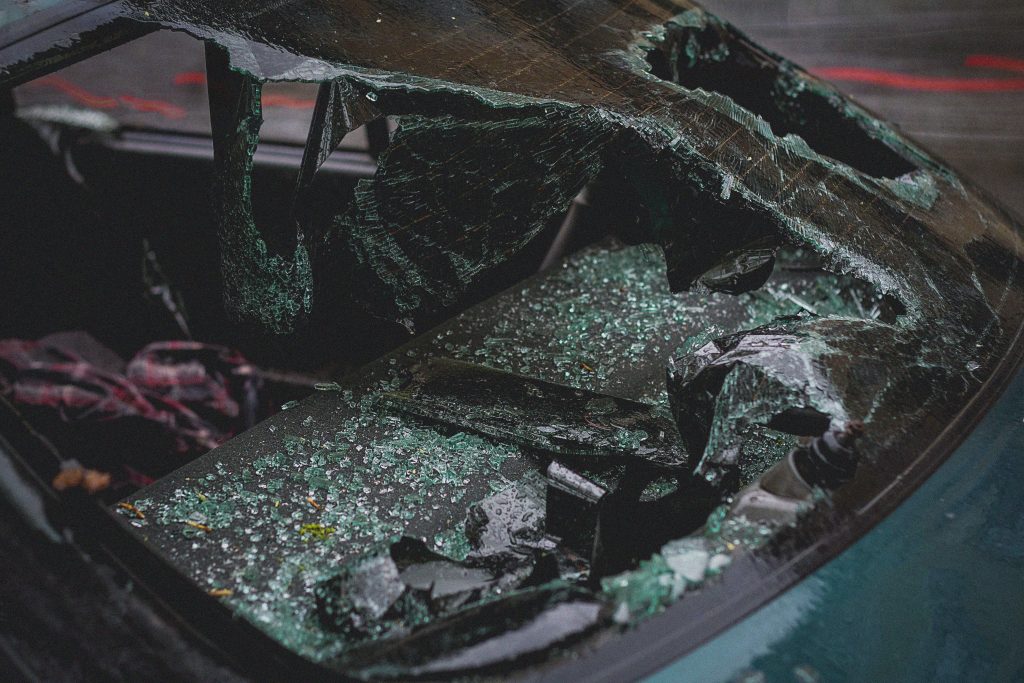 Imagine you were just in an accident, and you pulled over on the shoulder of the interstate highway. Traffic is roaring in your ears, the wind is whipping past your face, and you can feel the congested car flows as your tires buzz. Luckily, you are not injured. As you are waiting for the police to arrive, another collision happens right beside you two. Brakes are being slammed, and horns are being blown, but the chain reaction is just unstoppable. A third car darts into the road shoulder, toppling the vehicle behind you and slamming it in your direction. You are hit again.
Imagine you were just in an accident, and you pulled over on the shoulder of the interstate highway. Traffic is roaring in your ears, the wind is whipping past your face, and you can feel the congested car flows as your tires buzz. Luckily, you are not injured. As you are waiting for the police to arrive, another collision happens right beside you two. Brakes are being slammed, and horns are being blown, but the chain reaction is just unstoppable. A third car darts into the road shoulder, toppling the vehicle behind you and slamming it in your direction. You are hit again.
According to the National Highway and Traffic Safety Administration, rear-end collisions are the most common type of car accident in the United States. A pileup accident multiplies the danger of a single rear-end accident. It often causes severe body injuries, expensive medical bills, and piles of insurance paperwork. Who should be held liable for your pain and suffering when pileups occur? A recent case on Interstate 10 explored this question and provided answers for the poor victims.
Mr. Chanthasalo found himself in such a position where he just had a narrow escape from one life-threatening accident but got involved in another. In the first accident, Mr. Chanthasalo was rear-ended by Ms. Deshotel. In the second accident, Ms. Schum was rear-ended by Mr. Mitchell and hit Ms. Deshotel. Mr. Chanthasalo filed a lawsuit in Louisiana trial court against all three cars behind him and their respective insurers, State Farm, USAA Casualty Insurance Company, and Progressive. He later settled with Mr. Mitchell, the last driver, and his insurer. The controversy in the appeal focused mainly on Ms. Deshotel’s (the lady that first hit Chanthasalo) liability.
 Louisiana Personal Injury Lawyer Blog
Louisiana Personal Injury Lawyer Blog


 Knowing what is in an insurance agreement can determine whether or not you are covered for different injuries. If a buyer signed a policy, did not ensure that certain aspects were covered, and then never bothered to check or revise the policy, this person will likely be held accountable for knowing precisely what is in that policy.
Knowing what is in an insurance agreement can determine whether or not you are covered for different injuries. If a buyer signed a policy, did not ensure that certain aspects were covered, and then never bothered to check or revise the policy, this person will likely be held accountable for knowing precisely what is in that policy. The history of American jurisprudence is filled with various attempts by state legislatures and courts to grapple with the issue of liability that should be imposed on those in the business of serving alcohol. On the one hand, it makes logical sense to hold bars responsible for profiting from serving drinks to patrons to the point of intoxication and sending them out the door to wreak havoc on the world. Indeed, many jurisdictions have enacted “dram shop” laws to create this kind of liability. On the other hand, individual responsibility is a strong and enduring concept, and many states place the responsibility for drunken behavior squarely on the party that imbibes.
The history of American jurisprudence is filled with various attempts by state legislatures and courts to grapple with the issue of liability that should be imposed on those in the business of serving alcohol. On the one hand, it makes logical sense to hold bars responsible for profiting from serving drinks to patrons to the point of intoxication and sending them out the door to wreak havoc on the world. Indeed, many jurisdictions have enacted “dram shop” laws to create this kind of liability. On the other hand, individual responsibility is a strong and enduring concept, and many states place the responsibility for drunken behavior squarely on the party that imbibes. A customer sustaining severe and permanent injuries from a slip and fall accident at a business can cause one to wonder about the potential liability of the business owner. This can become even more complex in a situation where the business owner has leased the unit from the party that owns the building. A building owner may be liable for the injury, even when the unit has been leased out.
A customer sustaining severe and permanent injuries from a slip and fall accident at a business can cause one to wonder about the potential liability of the business owner. This can become even more complex in a situation where the business owner has leased the unit from the party that owns the building. A building owner may be liable for the injury, even when the unit has been leased out. Most court cases do not proceed to actual trial. In the context of criminal cases, the defendants often accept plea deals. In the context of civil cases, however, parties often settle or the case is simply dismissed through motion practice.
Most court cases do not proceed to actual trial. In the context of criminal cases, the defendants often accept plea deals. In the context of civil cases, however, parties often settle or the case is simply dismissed through motion practice. How much of an award or compensation could a parent expect when a school board is found liable for inflicting trauma on a child? A trauma to a child would have a profound effect on the parent as well as the child. Is it not reasonable to expect the school board to pay for the emotional damages the parent suffered? Unfortunately for a Baton Rouge mother, her failure to include in her written pleadings a claim for general damages resulted in a finding of no damages despite trial testimony supporting her emotional distress. A superior lawyer always includes all possible claims in written pleadings to avoid this unfortunate outcome.
How much of an award or compensation could a parent expect when a school board is found liable for inflicting trauma on a child? A trauma to a child would have a profound effect on the parent as well as the child. Is it not reasonable to expect the school board to pay for the emotional damages the parent suffered? Unfortunately for a Baton Rouge mother, her failure to include in her written pleadings a claim for general damages resulted in a finding of no damages despite trial testimony supporting her emotional distress. A superior lawyer always includes all possible claims in written pleadings to avoid this unfortunate outcome.  The following scenario is not uncommon. Person enters restaurant without incident. Same person exits restaurant, fails to notice the one-step curb just beyond the door, falls, gets injured, and files a lawsuit against the restaurant. When is a restaurant owner responsible for such an incident? A recent case out of Baton Rouge explored this question and provided useful guidelines for owners and patrons alike.
The following scenario is not uncommon. Person enters restaurant without incident. Same person exits restaurant, fails to notice the one-step curb just beyond the door, falls, gets injured, and files a lawsuit against the restaurant. When is a restaurant owner responsible for such an incident? A recent case out of Baton Rouge explored this question and provided useful guidelines for owners and patrons alike.  Life can be upended in an instant. One person’s negligent act can change the trajectory of multiple people’s lives. How much monetary compensation should this negligent, life-altering person be required to pay? Often after a trial court determines a damage award, the award stays the same. But what about when this award does not really compensate for the injuries? Recently, the Louisiana Third Circuit Court of Appeal determined that an injured party was entitled to far more than the trial court awarded in a car accident lawsuit out of Iberia Parish.
Life can be upended in an instant. One person’s negligent act can change the trajectory of multiple people’s lives. How much monetary compensation should this negligent, life-altering person be required to pay? Often after a trial court determines a damage award, the award stays the same. But what about when this award does not really compensate for the injuries? Recently, the Louisiana Third Circuit Court of Appeal determined that an injured party was entitled to far more than the trial court awarded in a car accident lawsuit out of Iberia Parish.  There’s a general understanding between a buyer and a seller that the seller will provide the good in an acceptable condition for a buyer. If the product is faulty, then the general understanding is that the seller will take responsibility for making things right as soon as they can. This is even solidified by warranties. What happens, then, when a construction company sells a New Orleans resident a roof that leaks so much it leads to a man slipping and falling? Is the danger created by the leak so obvious that the construction company shouldn’t be held liable for the injury?
There’s a general understanding between a buyer and a seller that the seller will provide the good in an acceptable condition for a buyer. If the product is faulty, then the general understanding is that the seller will take responsibility for making things right as soon as they can. This is even solidified by warranties. What happens, then, when a construction company sells a New Orleans resident a roof that leaks so much it leads to a man slipping and falling? Is the danger created by the leak so obvious that the construction company shouldn’t be held liable for the injury? Construction is a necessary inconvenience. No one enjoys having their travel rerouted due to road construction, but nonetheless, drivers must follow construction signs to safely avoid the temporary hazards road work creates. What happens when a driver doesn’t see the construction signs and drives her car into a large hole in the street? Even if the path down the street isn’t clear, what’s clear to the Louisiana Fourth Circuit Court of Appeals is that a trial judge isn’t allowed to determine which party is telling the truth.
Construction is a necessary inconvenience. No one enjoys having their travel rerouted due to road construction, but nonetheless, drivers must follow construction signs to safely avoid the temporary hazards road work creates. What happens when a driver doesn’t see the construction signs and drives her car into a large hole in the street? Even if the path down the street isn’t clear, what’s clear to the Louisiana Fourth Circuit Court of Appeals is that a trial judge isn’t allowed to determine which party is telling the truth.